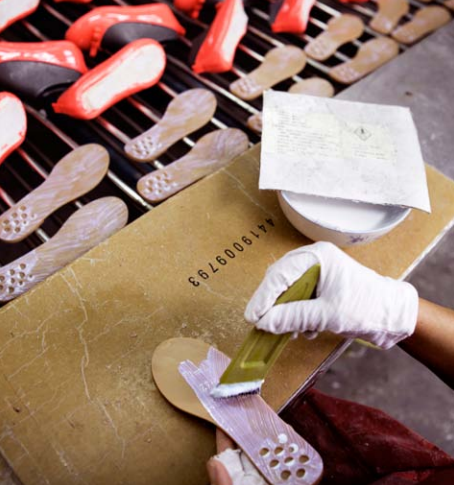This series of posts aims at showing how fashion companies are changing the way they conduct business to make it a better business. We will look at the achievements of these businesses in terms of innovation and sustainability and, possibly, how these achievements affect their business.
H&M plans to grow its store network at a rate of 10-15% yearly and, at the same time, is strengthening its commitment to sustainability. One evident sign is that sustainability training will be soon compulsory for all the company’s employees. Until now training was compulsory only to designers and buyers. The company’s CSR strategy has matured considerably in the last ten years. Just looking at the statement about water footprint in 2002 and comparing it with the one included in the 2012 report, it is clear that the company’s CSR strategy has matured considerably.
- CSR report 2002: “Due to the complexity of collecting and aggregating the data, we have decided not to measure use and emissions of water in our supply-chain or in the use of our products“.
- CSR report 2012: “Initial trials in 2009 show that process optimisation can deliver water savings of up to 30%. In 2010 we produced denim following this approach on a greater scale and achieved water savings of approximately 50 million litres relative to previous production methods….“.H&M sustainability journey is illustrated in the below graphic.

H&M sustainability journey Better and Alternative materials
H&M is the number one buyer of organic cotton globally: 11.4% of the cotton used in 2012 was more sustainable (7.8% organic and 3.6% Better Cotton). Cotton is certainly the most used fibre across the brand’s collections. However, they are also using recycled polyester: in 2012, their use of recycled polyester was equivalent to 7.9 millions PET bottles.
Besides cotton, 27% of leather used for shoes was certified by the Leather Working Group. 7.4 million shoes were made using water-based adhesives in 2012: it was 2.4 million in 2011.Better Manufacturing
Manufactures (and their sub-contractors) willing to work for H&M are required to sign the company’s code of conduct and “must demonstrate the necessary willingness to work towards full compliance”. A combination of training to be a responsible partner and full audits (as per the Full Audit Program) is provided and companies that are not compliant cannot supply goods to the company. Existing suppliers are monitored regularly. In 2012, more than 2,600 audits were carried out. The company is very active in Bangladesh where the majority of its products are produced and will be produced. It is in the company’s interest to improve working conditions across the country’s apparel industry. As per today, we are not sure about achievements at this level despite the pressures on the Bangladeshi governments and other local stakeholders.H&M is currently engaged in providing training to workers of their suppliers’ factories on health and safety and their rights: more than 500,000 workers have been educated since 2008.
H&M is increasing the use of water-based adhesives Resource Efficiency
H&M is optimising its processes in order to reduce the use of water and energy, while minimising waste and the use of polluting, hazardous chemicals. The company aims to work on a full Lifecycle Assessment (LCA) and is certainly aware of the exact footprint across its products’ lifecycle. The retailer is also working closely with main sourcing partners (100-120) to increase their energy efficiency and reduce carbon intensity. Local projects in partnership with local energy suppliers and manufacturers are rolling out in Bangladesh and China.Transparency
Transparency is a minimum requirement in H&M’s code of conduct. The company also allows representatives of employees to sit in the board, a quite peculiar practise in the industry.
H&M has also finally released the full list of their suppliers on the corporate web site. This has recently become the norm and non compliant brands are now seen as laggards.Consumer Engagement
As more than 60% of environmental footprint is at a consumption level, H&M has made available a guide to garment care to its customers.
Like other mainstream brands, also H&M has launched a take-back scheme in some of its stores globally in collaboration with I:Co. It is certainly too early to evaluate the success of the initiative. For sure, this will depend largely depend on the number of stores the scheme will be available at and the willingness of employee to educate and incentivise customers to take back unwanted clothes.The future
Some of H&M commitments for the near future: - To source 100% of more sustainable cotton (BCI, organic and recycled) by 2020.
- To source 100% of energy from renewable resources.
- Improve working conditions in Bangladesh: focus is on living wages.
- Source more sustainable leather.
- Work with the Sustainability Apparel Coalition to translate the Higg Index into a consumer labelling that helps consumers compare sustainability performances of products across brands.
- Provide buyers and designers with more training about sustainability issues and make training compulsory to all employees especially sales advisors.

